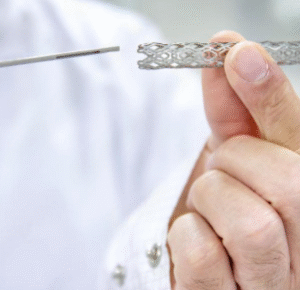1. Introduction to Patient Pass in Neurosurgery
Patient pass in neurosurgery refers to a protocol designed to ensure the seamless transfer and care of patients undergoing neurosurgical procedures. This system aims to improve communication among healthcare providers, streamline patient management, and enhance overall patient safety during their hospital stay.
2. Importance of Patient Pass in Neurosurgery
The importance of patient pass in neurosurgery cannot be overstated. It helps reduce medical errors, ensures continuity of care, and provides a clear and structured communication framework among the surgical team, nurses, and other healthcare professionals involved in a patient’s care.
3. History of Patient Pass Systems
Patient pass systems have evolved over the years. Initially developed to address the need for better communication in healthcare, these systems have become integral to surgical departments, especially in complex fields like neurosurgery where precise and accurate information exchange is critical.
4. Components of a Patient Pass System
A comprehensive patient pass system includes detailed documentation of the patient’s medical history, surgical procedure details, post-operative care plans, and any specific instructions for ongoing management. It also involves regular updates and handovers between shifts and departments to ensure consistency in patient care.
5. How Patient Pass Enhances Communication
Effective communication is at the heart of patient pass systems. By standardizing the exchange of patient information, these systems help ensure that all healthcare providers are on the same page, reducing the risk of miscommunication and improving patient outcomes.
6. Role of Technology in Patient Pass
Technology plays a significant role in modern patient pass systems. Electronic health records (EHRs), digital handover tools, and mobile applications facilitate real-time updates and access to patient information, making the handover process more efficient and reliable.
7. Training Healthcare Professionals
Training is essential for the successful implementation of patient pass systems. Healthcare professionals need to be well-versed in the protocols and tools used in the handover process to ensure that they can effectively communicate and manage patient care transitions.
8. Patient Pass and Patient Safety
Patient safety is a primary focus of patient pass systems. By ensuring that all relevant patient information is accurately communicated and documented, these systems help prevent errors, reduce complications, and improve overall patient safety during neurosurgical care.
9. Implementing Patient Pass in Hospitals
Implementing a patient pass system in hospitals involves careful planning, staff training, and the integration of technology. Hospitals must create clear protocols and provide the necessary resources to support healthcare professionals in adopting and utilizing the system effectively.
10. Challenges in Patient Pass Implementation
Despite its benefits, implementing a patient pass system can be challenging. Common obstacles include resistance to change, lack of training, technological issues, and ensuring consistent use across all departments. Addressing these challenges requires strong leadership and ongoing support.
11. Case Studies of Successful Implementation
Several hospitals have successfully implemented patient pass systems in their neurosurgery departments. Case studies highlight the positive impact on patient care, reduced error rates, and improved team communication, demonstrating the system’s value and effectiveness in a real-world setting.
12. Patient Pass and Interdisciplinary Teams
Neurosurgery often involves interdisciplinary teams, including surgeons, anesthesiologists, nurses, and rehabilitation specialists. Patient pass systems facilitate seamless communication among these diverse team members, ensuring coordinated care and better patient outcomes.
13. Patient Experience and Patient Pass
The patient experience is significantly enhanced by the use of patient pass systems. Patients benefit from more organized and attentive care, reduced wait times, and clearer communication about their treatment plans, leading to greater satisfaction and confidence in their healthcare providers.
14. Legal and Ethical Considerations
Patient pass systems must comply with legal and ethical standards, including patient confidentiality and data protection laws. Healthcare providers must ensure that all information is securely stored and shared, respecting patient privacy while facilitating effective care coordination.
15. Monitoring and Evaluation of Patient Pass Systems
Regular monitoring and evaluation are crucial for the success of patient pass systems. Hospitals should track key performance indicators, gather feedback from healthcare providers and patients, and continuously refine the system to address any issues and improve its effectiveness.
16. Patient Pass in Emergency Situations
In emergency neurosurgical situations, patient pass systems are particularly valuable. They provide a structured framework for quickly transferring critical patient information, ensuring that all team members are informed and prepared to deliver timely and effective care.
17. The Future of Patient Pass in Neurosurgery
The future of patient pass in neurosurgery looks promising, with ongoing advancements in technology and increasing recognition of its importance. Innovations in digital communication tools and data integration will further enhance the efficiency and effectiveness of patient pass systems.
18. Patient Pass and Post-Operative Care
Post-operative care is a critical phase in neurosurgery, and patient pass systems help ensure that all relevant information is communicated during patient handovers. This continuity of care is essential for monitoring recovery, managing complications, and providing comprehensive support to patients.
19. Global Perspectives on Patient Pass
Patient pass systems are used worldwide, with varying approaches and protocols. Studying global perspectives and best practices can provide valuable insights into improving and standardizing these systems to enhance patient care universally.
20. Patient and Family Involvement
Involving patients and their families in the patient pass process can improve outcomes. Clear communication about the patient’s condition, treatment plan, and recovery expectations helps build trust and ensures that families are informed and prepared to support the patient.
21. The Role of Leadership in Patient Pass
Strong leadership is essential for the successful implementation and maintenance of patient pass systems. Hospital leaders must prioritize patient safety, allocate necessary resources, and foster a culture of open communication and continuous improvement.
22. Financial Implications of Patient Pass Systems
While implementing patient pass systems involves initial costs, the long-term financial benefits are significant. Improved patient outcomes, reduced error rates, and enhanced efficiency can lead to lower healthcare costs and better resource utilization.
23. Integrating Patient Pass with Other Systems
Integrating patient pass systems with other hospital information systems, such as EHRs and patient management software, can further streamline communication and enhance the overall efficiency of patient care processes.
24. Customizing Patient Pass for Neurosurgery
Neurosurgery has unique demands and challenges, and patient pass systems should be customized to meet these specific needs. Tailoring the system to the workflows and requirements of neurosurgical teams ensures that it effectively supports their work and enhances patient care.
25. Conclusion: The Impact of Patient Pass
The implementation of patient pass systems in neurosurgery has a profound impact on patient safety, care coordination, and overall outcomes. By facilitating effective communication and ensuring continuity of care, these systems are vital tools in modern neurosurgical practice, ultimately improving the quality of care provided to patients.




